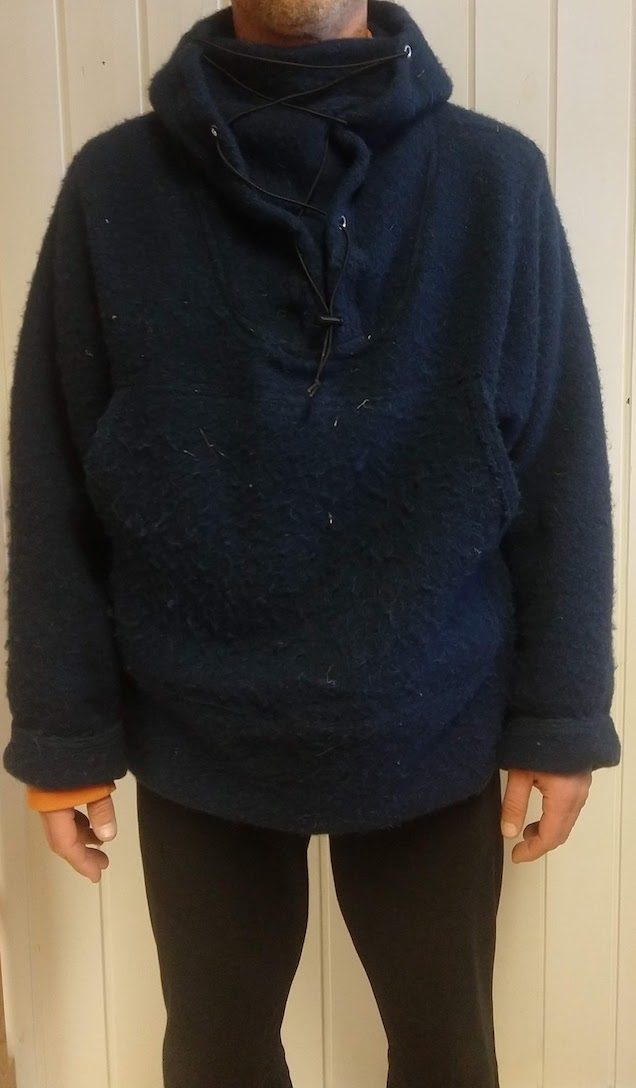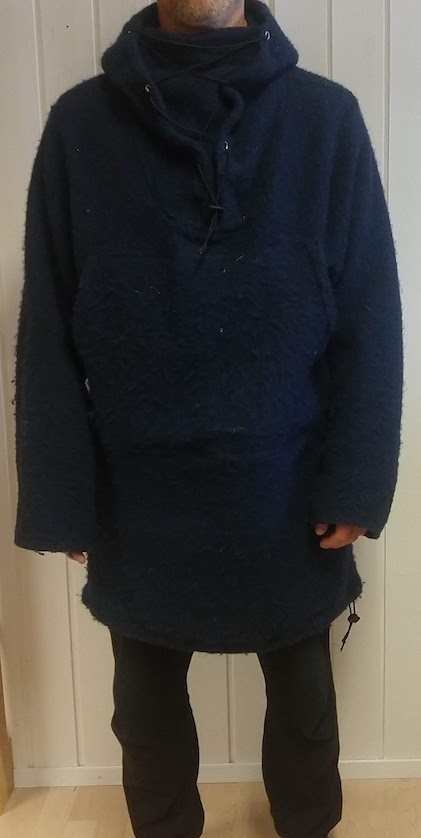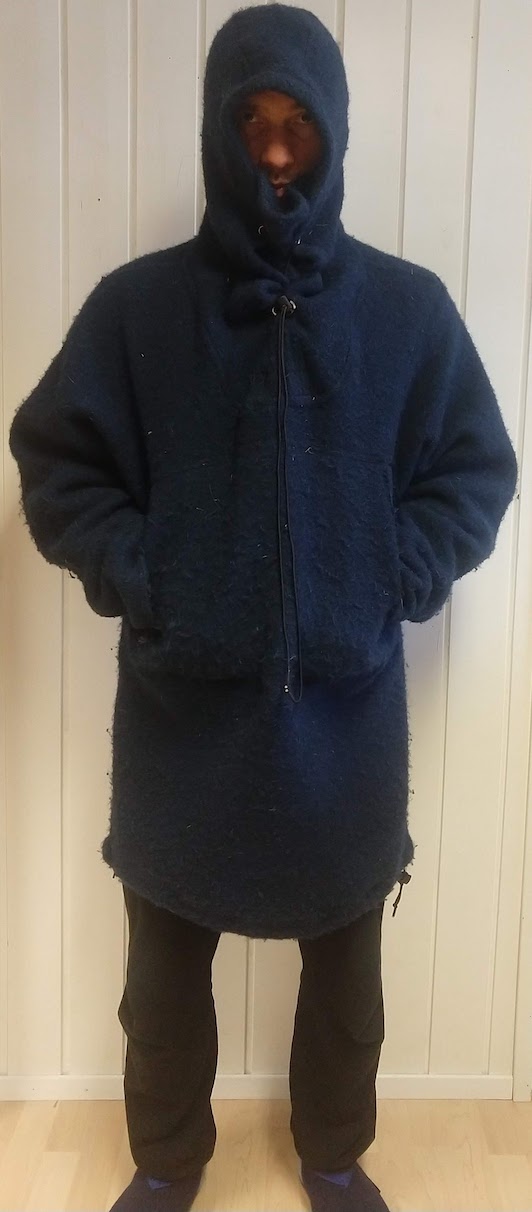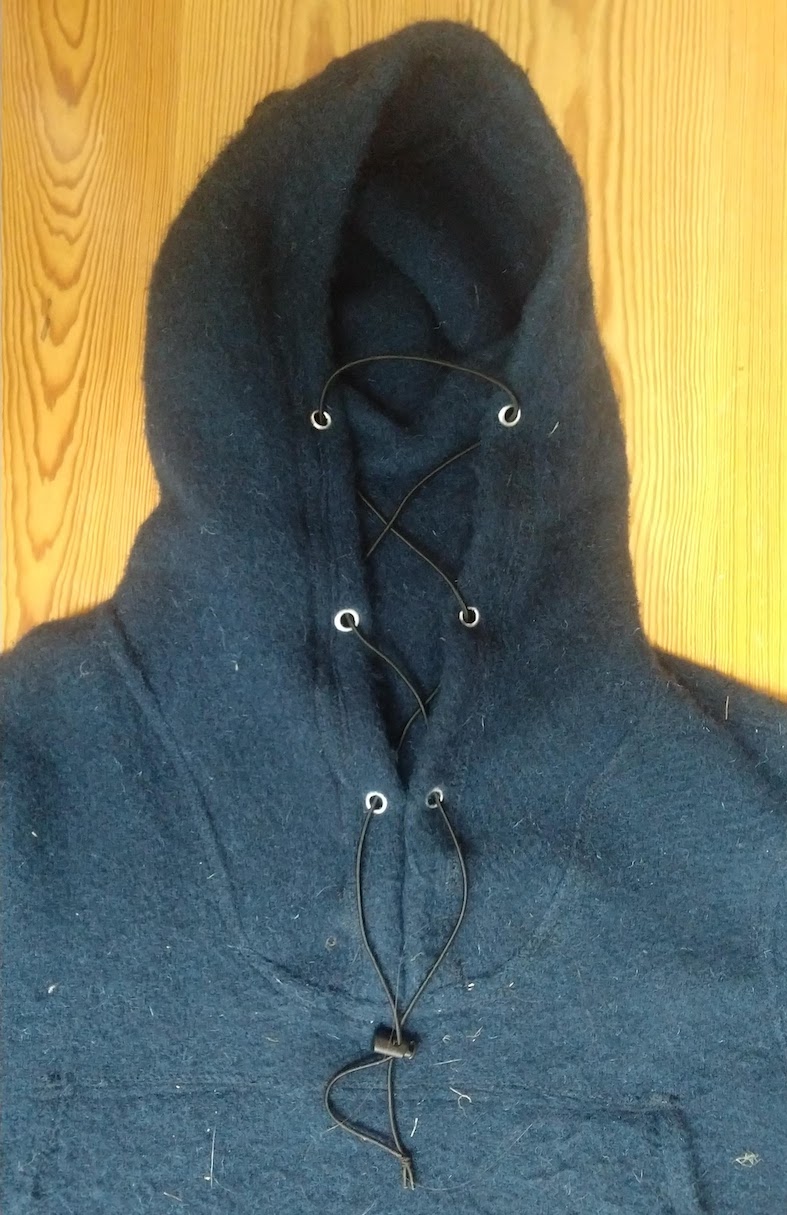Technical synthetic clothing, such as lightweight fleeces or down jackets, is not a great match for bush crafting and camp fires. Before you know it your expensive high-tech clothing is dirty, smelly, full of rips and spark holes. My daughter recently brushed the arm of her down jacket against the hot pipe of the tent stove and the immediate result was the smell of burning plastic and a white cloud of feathers and down… Traditional clothing made from polyester-cotton blends or thick wool (not the thin merino wool commonly used in base layers) is much more robust, fire retardant and therefore better suited for these purposes.
I fancied trying out a wool anorak, like the iconic Lester River Bushcraft Boreal Shirt Anorak, but the prices are pretty steep, especially considering importing into Norway, which would add about half the price in shipping and custom taxes. The good news is that making your own is not that hard and there are many tutorials available on the internet; for a start, see e.g. here or here.
I made mine from a pair of 100% wool plaids, 130x170 cm, bought for less than 20 Euro a piece. I am sure the quality is not as good as that used in the commercially produced anoraks, but it has worked fine for me so far, with occasional use. One thing I should have done, in hindsight, is wash the blankets at a higher temperature to shrink them a bit, tightening the weave, making the material stronger and slightly more windproof.
For a pattern I took apart an old hoody and copied the panels from the body and hood. I first made a prototype from cheap fleece and modified it to my taste in several iterations, making it wider and longer, enlarging the kangaroo pocket, adding the neck flap and so on.
I copied the final version onto the wool fabric and started sewing it together. The thickness of the material made folded hems a bit challenging on a home sewing machine. Eyelets, bungee cord and cord locks were used in the hood and at the bottom hem. I made some mistakes, of course, and had to rip out and redo some seams, but in the end it worked out pretty well. Who cares that it makes you look like a hermit as long as there is nobody around?
To be clear, this not something you want to take on your next ultralight hiking trip. It is heavy and compresses poorly, with weight and volume roughly comparable to a three-season synthetic sleeping bag. However, it is great for wearing all day on bushcrafting winter adventures, or to take along in a car or a pulk on winter camping trips.
Also, it is not windproof at all, so even moderate wind requires the use of some sort of outer shell. My waterproof shell jacket does not really fit over the anorak, because the thing is so bulky. I therefore have a modified cotton anorak, originally Swedish army winter gear surplus, which fits over the wool anorak as a traditional clothing solution in cold dry weather (no good in wet and humid conditions, which pose a different challenge).






